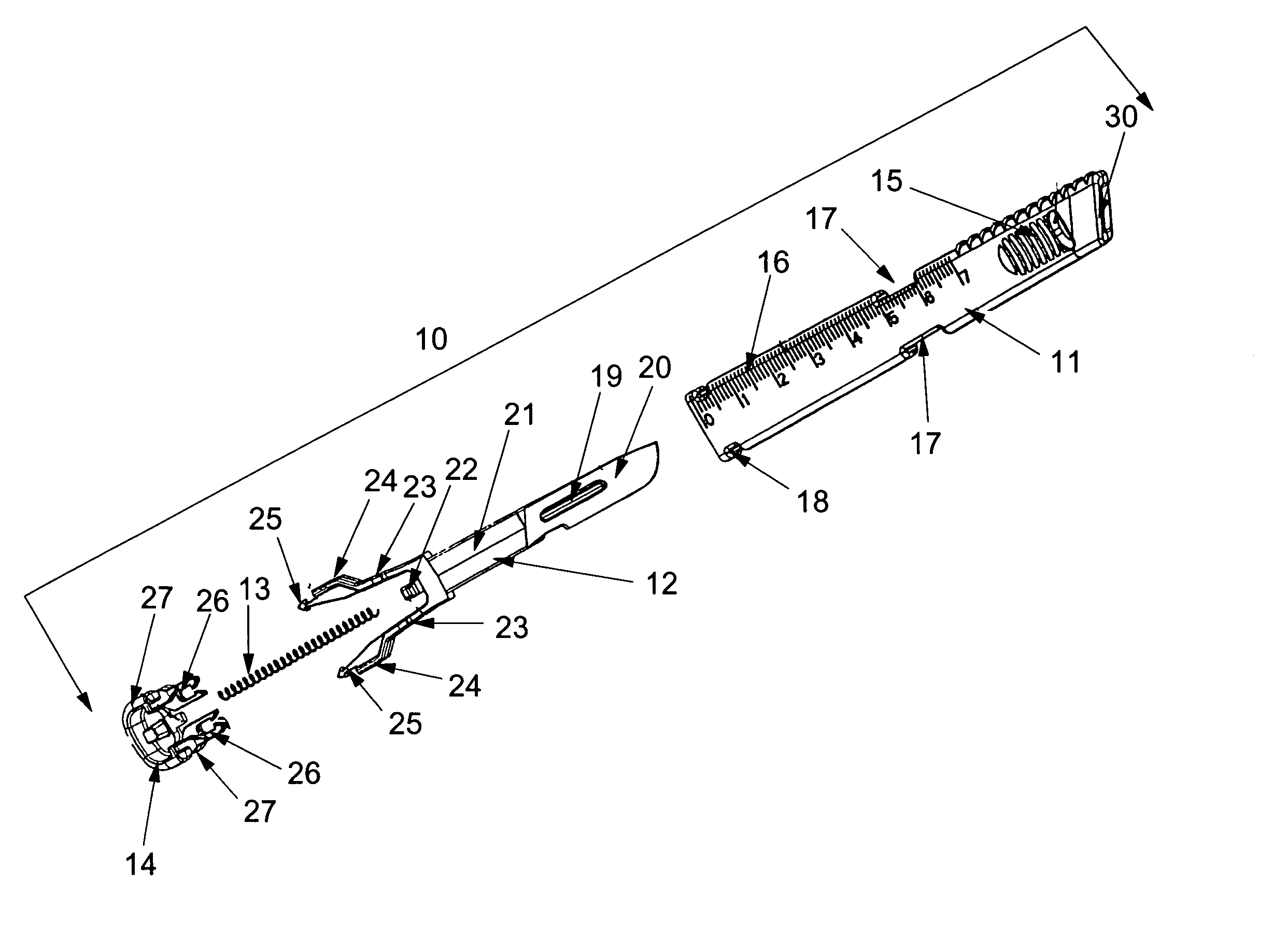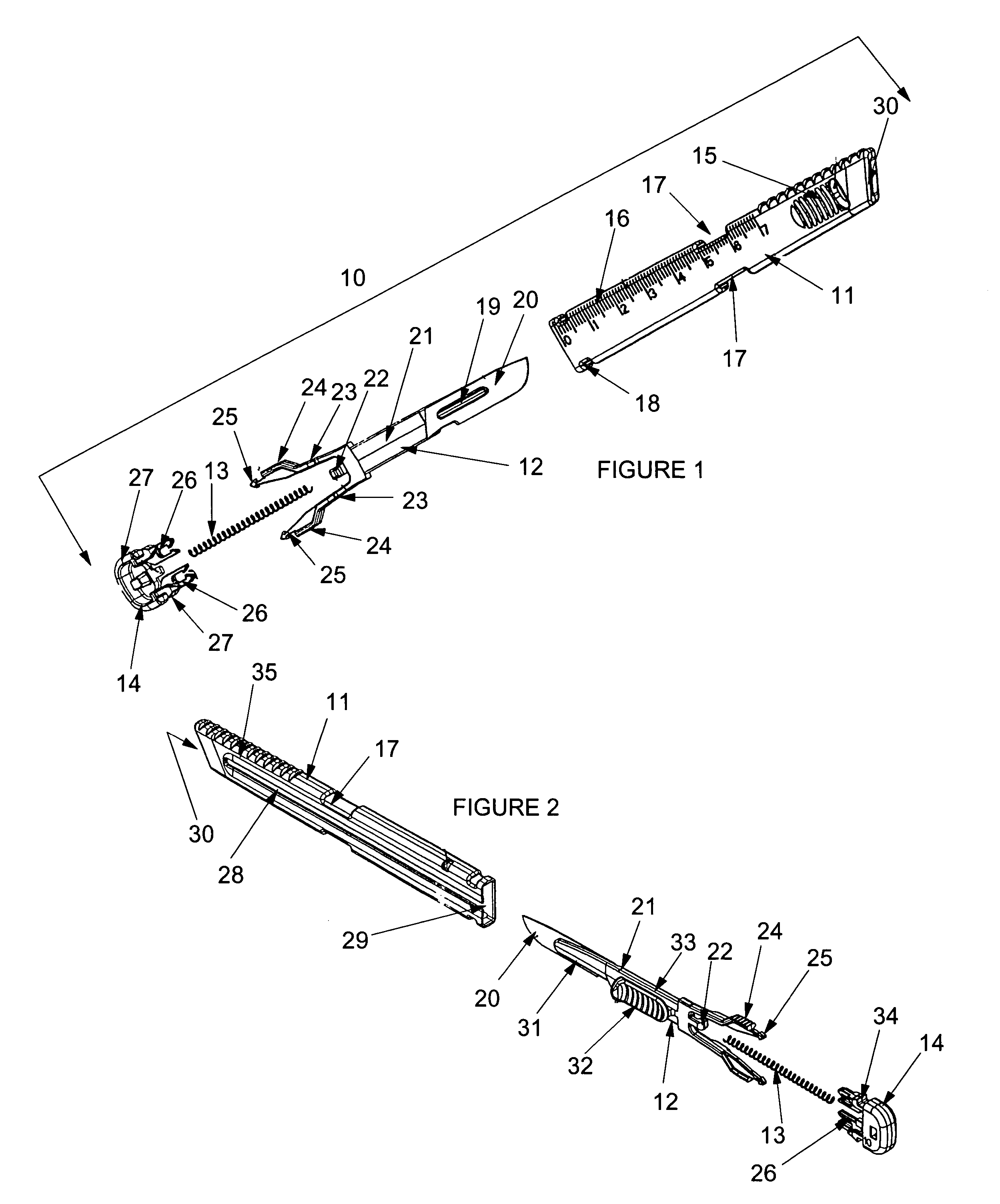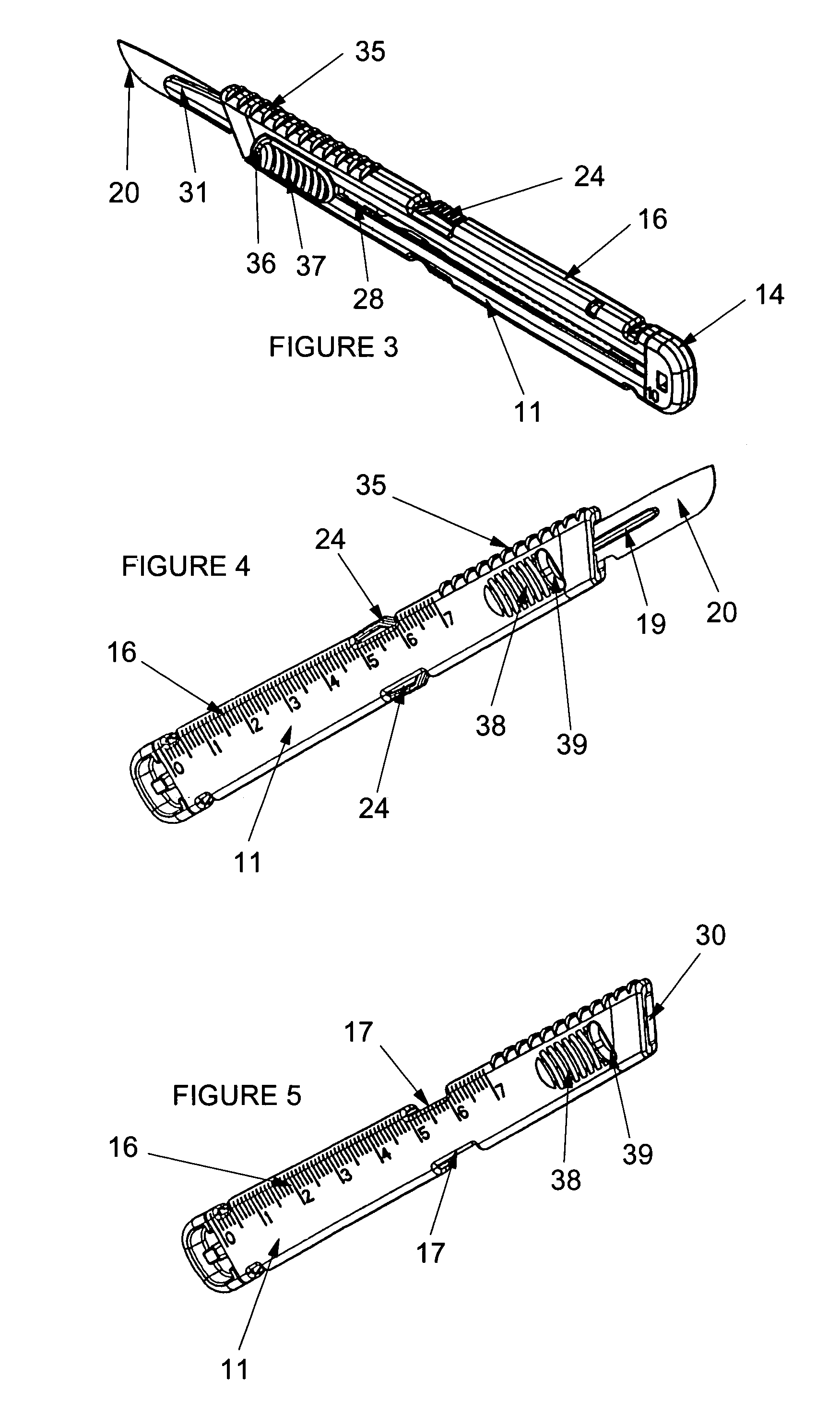Retractable scalpel
a scalpel and retraction technology, applied in the field of scalpels, can solve problems such as accidental retraction of blades, and achieve the effect of eradicating accidental stabs
- Summary
- Abstract
- Description
- Claims
- Application Information
AI Technical Summary
Benefits of technology
Problems solved by technology
Method used
Image
Examples
Embodiment Construction
[0031]The invention is now discussed with reference to the figures. FIGS. 1 through 8 show several aspects of the invention retractable scalpel. The scalpel 10 comprises a cover housing (with housing 11 and end cap 14), a scalpel blade 20, a sliding piece 12, and a spring 13. The assembled scalpel 10 is shown in FIGS. 3, 4, 6, 7, and 8.
[0032]The cover housing is generally formed like a scalpel handle. It may not be thicker than about three eighths of an inch and is preferably about one fourth of a inch or less. This limitation has in the past condemned retractable scalpels to be either too thick (sufficient structural support) or too thin (the handle part is too flexible and bends too much during critical steps in a procedure). The present invention has achieved exceptional resistance to bending while maintaining a desired thickness of the cover housing. Housing 11 comprises a generally rectangular shape with a bore extending from opening 30 to opening 29, where slot 28 extends from...
PUM
 Login to View More
Login to View More Abstract
Description
Claims
Application Information
 Login to View More
Login to View More - R&D
- Intellectual Property
- Life Sciences
- Materials
- Tech Scout
- Unparalleled Data Quality
- Higher Quality Content
- 60% Fewer Hallucinations
Browse by: Latest US Patents, China's latest patents, Technical Efficacy Thesaurus, Application Domain, Technology Topic, Popular Technical Reports.
© 2025 PatSnap. All rights reserved.Legal|Privacy policy|Modern Slavery Act Transparency Statement|Sitemap|About US| Contact US: help@patsnap.com



